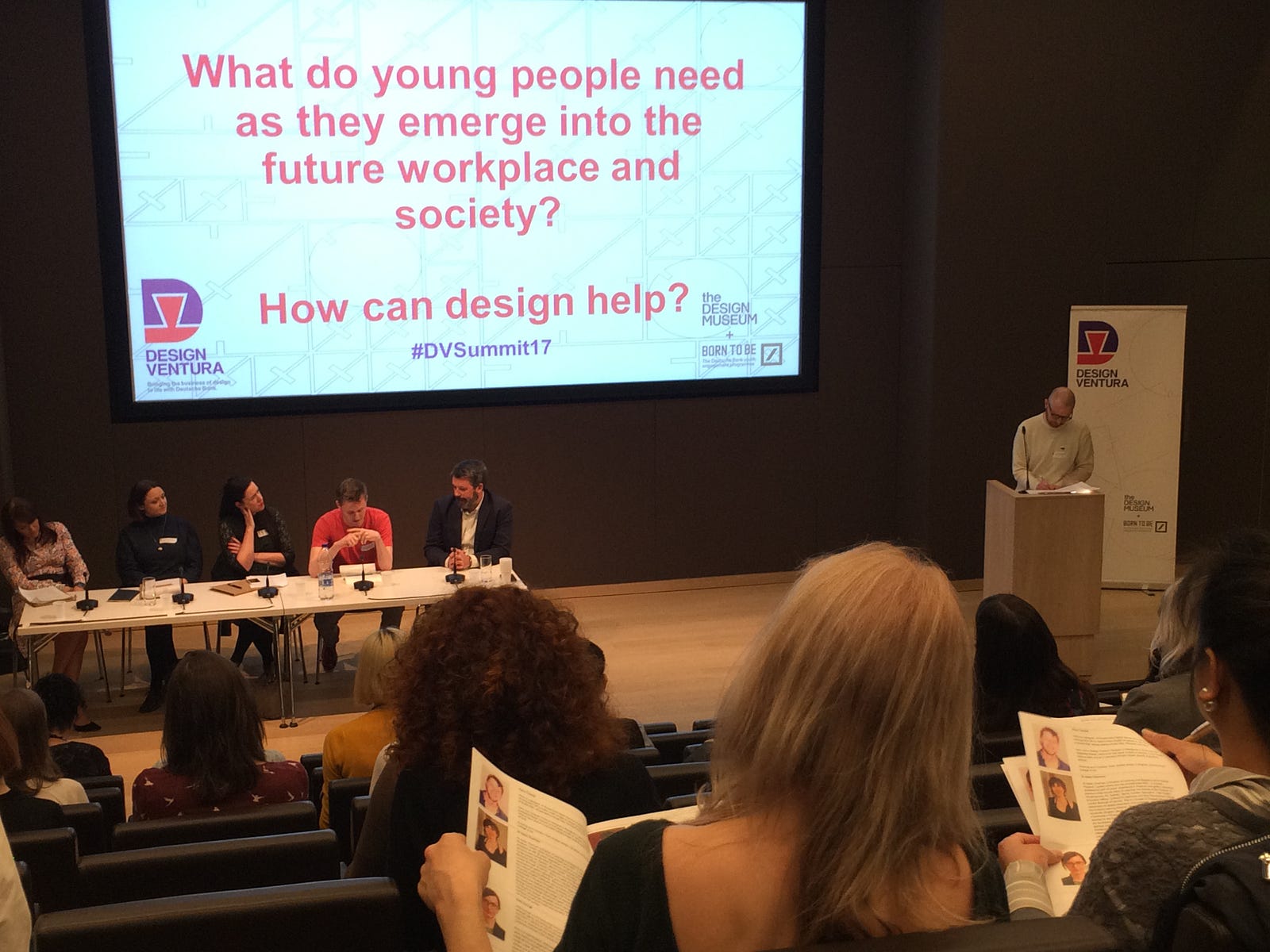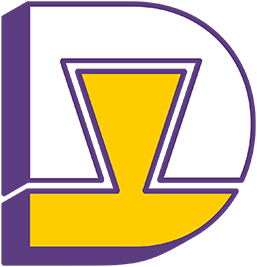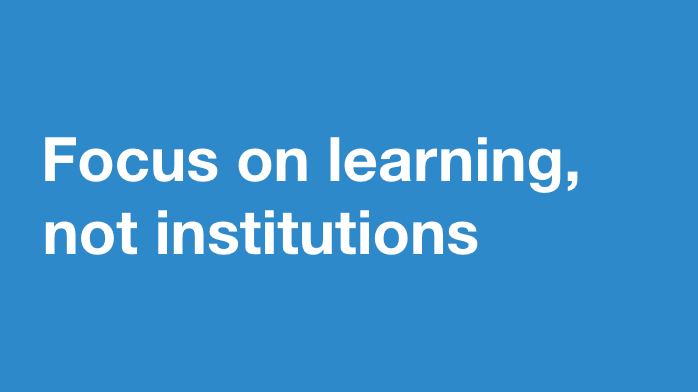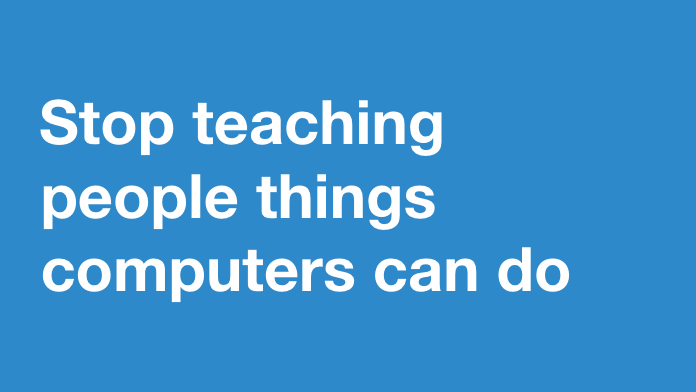
What do young people need as they emerge into the future workplace?

The Design Ventura summit “Design: the problem and the solution” was held on 29 March 2017. Its purpose was to bring together educators, designers, cultural providers and policy makers to discuss how they can ensure that young people are developing creativity, design thinking and employability skills to prepare them for future success.
The following extract is by Harry Trimble, Designer for Service Manual and Patterns Government Digital Service, on his take on the issues discussed.

I spoke at the Design Museum on Wednesday, for its design education conference. I was in a panel with some nice people, doing interesting, important things. We spoke for 5 minutes each, then answered some questions.
Here’s what I said:
Hello. I’m Harry. I work on GOV.UK, designing public services.
I only got asked on Friday to come speak here, so apologies if what I’m about to say sounds a little disorganised, raw or even ranty.
Also I’ve framed what I’m about to say in the context of education, rather than about “design”, as that seems a little specific and design is just about problem solving anyhow.
So to answer the question we been given: ‘What do young people need as they emerge into the future workplace, and society? How can design help?’
First we need to focus on learning, not institutions.
From schools to universities to inspectors to workplaces. Institutions are obsessed with themselves and the things they care about. Needless, formal things like testing, exam results, assessment reports and performance reviews. Which are there to make institutions look good. Let’s be honest that doesn’t meet the needs of their users.
Even despite all this measurement, we don’t measure the things that do matter in learning. The outcomes of which can only be observed over years and decades, not weeks and months. For example schools success should measured not by exam results, but how they’re students are doing years after they leave. What jobs they do. Can they adapt to new jobs. How happy they are.
The best learning now is happening on the fringes of institutions. In school code clubs, meet-ups and competitions like Design Ventura. Learning to work in teams, think through making, test ideas and explain your decisions. All things that will help in most careers in the future, not just design. So the more young people who are able and comfortable to do this, the better.
This learning is less formal. It’s more relevant. It’s more agile. It exists to meet young people needs, which institutions are either too slow or unaware to do.
This takes me onto my second point;
Stop teaching people things computers can do. I’ll repeat myself. Stop teaching people things computers can do.
So I don’t mean reading, writing, maths and increasingly coding, which are foundational skills for all learning.
But much of the formal stuff we teach young people are things computer can and will do better: recalling facts and performing standardised processes. We are preparing people for careers that will, if they aren’t already, being automated away. Automated away into history.
Also just as an aside, many of the jobs that are being automated are ones people hate doing anyway.
What we should be doing is teaching young people problem solving, question asking, collaboration, empathy and the ability to learn new things continuously. Things which computers on the whole suck at. Much of our prosperity in the future will be depend on how many people can do jobs computers can’t.
Much of the education systems we have now is still Victorian. As journalist Tom Goodwin said ‘It’s staggering to me as to how much the world has changed, and how little education has.’
We need education for the future. It needs to look like this.
Education will be of the internet, not just on it.
The internet is not about computers, it’s about people.
Education in the future will fully embrace the culture of the internet: it will be more open. More collaborative. More distributed. And more adaptable to change.
This is already happening in some places.
Teachers are collaborating on lesson plans over Facebook. They are meeting on things like Design Ventura’s teacher training, where they can share their enthusiasm about teaching design. This point is the super important: the world can never have enough enthusiastic teachers.
Having networks of enthusiastic design teachers is a powerful thing. Bringing people together around a shared interest is a powerful thing. The internet is great for this.
Another example is Code Club, where thousands of volunteers are teaching kids to code. If you want to set up a Code Club, all you have to do is go online, download the tools and find a room to host it in.
Because it’s a centrally-run resource it can be updated regularly. Meaning the things the children learn is as up-to-date as possible. The internet is great at this too.
Recently at work, we ran a day for degree students interested in design in the public sector. Students came from London, Glasgow, Copenhagen, Berlin and even Buenos Aires. This took nothing more than a blog and Eventbrite to organise.
These examples hint at what education can and needs to be. Hands-on. Project based. Networks of enthusiastic teachers. Open-source curriculums adaptable to change. Backed up by skilled volunteers. Enabled by internet culture and infrastructure.
The world is fast and not short of problems. Education can and should be equal to it.
Thanks.
Source: https://medium.com/@HarryTrimble/design-ventura-summit-241ec7cf5c93



